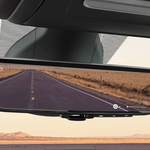
Chrysler's electric vehicle goes beyond just scrapping an internal combustion engine, setting the stage for what the company calls software-enable vehicles.
At first glance, the Chrysler Airflow battery-electric vehicle—called an EV by most in the automobile manufacturing industry—seems to be like most other electric vehicles debuted over the past few years.
A further deep-dive divulges a much deeper purpose to the concept vehicle beyond just announcing Chrysler's entrance into the EV market. The Airflow does more to introduce the concept of the software-enabled car that will become the driver of $20 Billion in incremental annual revenues by 2030 for Chrylser’s parent company Stellantis.
What makes a vehicle software-enabled? More importantly, the question becomes why does Stellantis believe it will generate such high revenues?

Stellantis appears to be counting on the greater emergence of the concept of mobility solutions of vehicle manufacturing. Mobility relies on the concept of vehicles as more of a method to move people from place-to-place, in order to do the things they want or need to accomplish.
More simply, vehicles will become more like mass-transportation on an individual scale.
Instead of purchasing a vehicle simply because a place of employment requires a 20-mile drive, the worker will seek a method of transportation that gets them to that location without having to jump on a train or bus.
Software-enabled stresses the experience while traveling, rather than the vehicle in which you’re traveling.
As an example, every passenger in a software-enabled vehicle would have access to their own touchscreen. The driver would be focused on the road, while the passenger may be watching a movie via a streaming service, playing their favorite video game or ordering groceries to be delivered after the trip has been completed.

The software-enabled vehicle will be fully connected. It will utilize AI to remember a passenger’s favorite streaming services or suggest preferred routes based upon the driver and times of day. Every user will be provided with an experience tailored to their specific needs and connected lifestyle.
Has a passenger's favorite streaming service been upgraded? The software-enabled vehicle will make the update for them. Just discovered a new service that can be accommodated on demand with over-the-air (OTA) updates.
OTA updates won’t be confined to just passenger entertainment. New vehicle features and updates will be included in the functionality. This concept of providing vehicle updates OTA has already been enabled by Jeep and other manufacturers such as Ford and GM.
Stellantis’ concept of the software-enabled vehicle will be driven by integrating two in-house technologies STLA Brain platform and STLA SmartCockpit. Stellantis slated both technologies to be introduced in certain production vehicles by 2024.
In addition, Chrysler announced a goal of a full offering of EVs by 2028.

![banner right]()
![banner right]()














